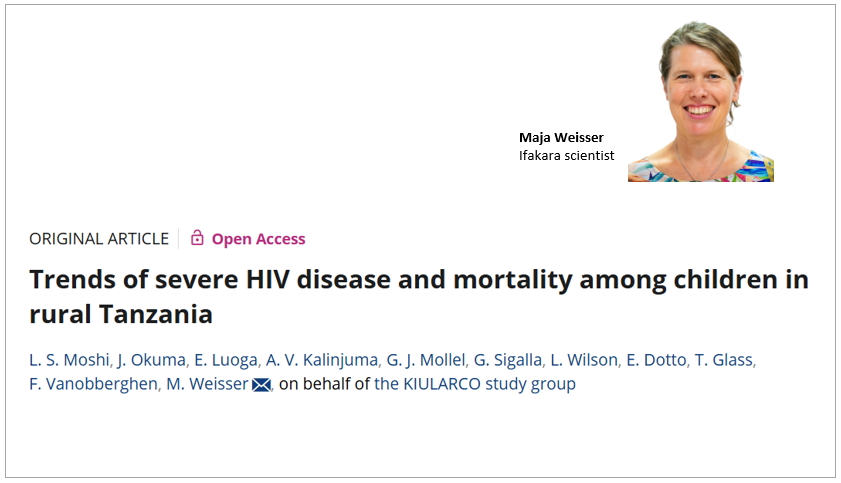
HIV: Early testing and treatment can cut child mortality rates, study confirms

There is encouraging news in the fight against HIV: a new study shows that fewer children in rural Tanzania are arriving at clinics with advanced stages of the disease, and fewer are dying as a result.
Published on HIV Medicine, the study tracked nearly 2,800 children living with HIV who received care at the Chronic Diseases Clinic of Ifakara (CDCI) between 2005 and 2020. The findings reveal a significant decline in both disease severity and mortality among children over the 15‑year period.
The research was conducted by scientists from the Ifakara Health Institute, the Swiss Tropical and Public Health Institute, and St. Francis Referral Hospital. L. S. Moshi of Ifakara and James Okuma of Swiss TPH were the lead authors, while Prof. Maja Weisser of Ifakara served as the senior author.
Early diagnosis, treatment saves lives
HIV remains a leading cause of child mortality in sub-Saharan Africa. But this study confirms that early diagnosis and timely treatment save lives—and that’s exactly what’s been happening in parts of rural Tanzania.
“Children who started ART early had significantly lower risk of death,” the researchers wrote, stressing the importance of early HIV testing and rapid treatment initiation.
Between 2005 and 2010, about 64% of children arrived at CDCI already in advanced stages of HIV (Stage III or IV). By 2016 to 2020, that number had dropped to just 31%. Over the same period, one-year mortality fell from 10.9% to 4.6%.
More: About this
A real-world, rural study that spanned 15 years
This prospective cohort study followed 2,783 children under the age of 15, all diagnosed with HIV and newly enrolled at CDCI between 2005 and 2020. The CDCI clinic, located at St. Francis Referral Hospital in Ifakara, serves as the main site for KIULARCO—a unique long-term HIV cohort study supported by the Ifakara Health Institute and Swiss TPH.
Researchers collected clinical data on each child, including HIV stage at enrollment, age, referral method, antiretroviral treatment status, and survival after one year. The study offers a rare, detailed look at pediatric HIV care in a real-world, rural African setting—and how improvements in the health system have made a measurable difference over time.
What the study revealed
📉 Children are being diagnosed earlier
Fewer children are showing up at clinics in advanced stages of HIV. Early testing is working—especially through PMTCT programs.
💊 Early treatment saves lives
Children who started antiretroviral therapy soon after diagnosis were much more likely to survive the first year after enrollment.
🏥 CDCI is making an impact
Consistent HIV care, strong referral networks, and long-term follow-up at CDCI have helped reduce disease severity and mortality across the board.
Delays in referrals persist, and infants still at risk
Despite the progress, the study also highlights a clear danger for children under five—especially infants. These younger children are still the most vulnerable to dying from HIV, particularly if they arrive at the clinic late or after their immune systems are already compromised.
One reason: delayed referrals. Missed opportunities for early diagnosis during delivery or postnatal care can lead to children showing up at clinics only when their health is already deteriorating. Infants are also naturally more fragile and more prone to complications, even with treatment.
“Delayed referral to HIV care remains a key risk factor for mortality,” the researchers noted. They recommend stronger referral systems, routine HIV testing at under-five clinics, and faster linkage to ART services, especially for the youngest patients.
A hopeful future for pediatric HIV care
This new evidence shows that things are getting better for children living with HIV in Tanzania—but it also makes clear where more work is needed. If the country continues investing in early testing, strong referral systems, and ongoing care, even more children can survive and thrive.
📘 Read the full publication here
